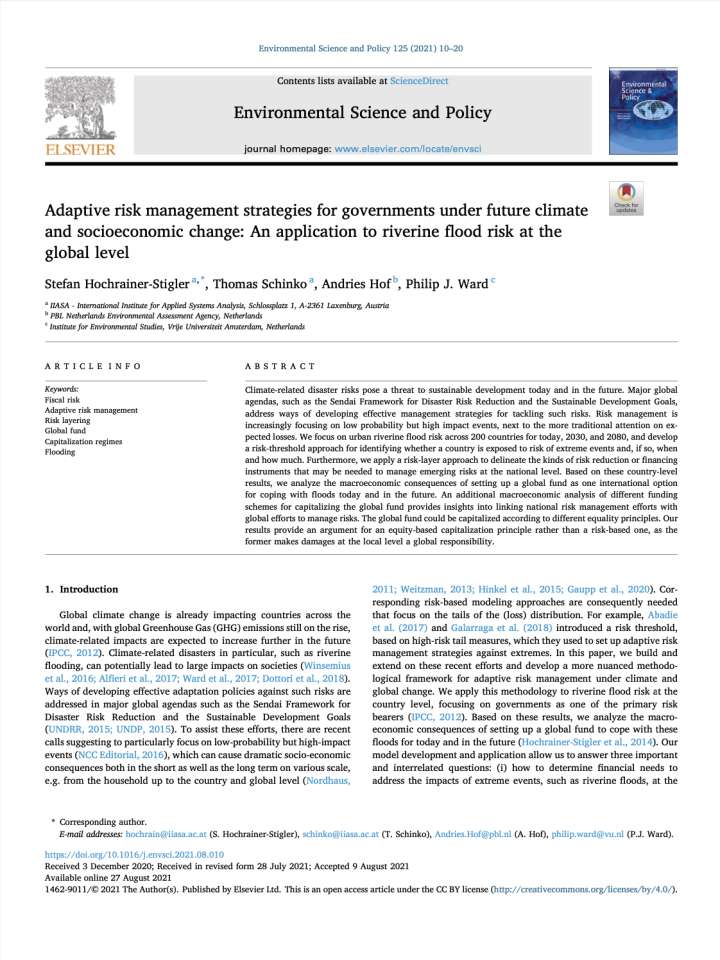Adaptive risk management strategies for governments under future climate and socioeconomic change: An application to riverine flood risk at the global level
This paper examines adaptive risk management strategies for governments under future climate and socioeconomic change with an application to riverine flood risk at the global level. Climate-related disaster risks pose a threat to sustainable development today and in the future. Major global agendas, such as the Sendai Framework for Disaster Risk Reduction and the Sustainable Development Goals, address ways of developing effective management strategies for tackling such risks. Risk management is increasingly focusing on low probability but high impact events, next to the more traditional attention on expected losses. This paper focuses on urban riverine flood risk across 200 countries for today, 2030, and 2080, and develop a risk-threshold approach for identifying whether a country is exposed to risk of extreme events and, if so, when and how much. Furthermore, the research applies a risk-layer approach to delineate the kinds of risk reduction or financing instruments that may be needed to manage emerging risks at the national level.
Based on these country-level results, the researchers analyze the macroeconomic consequences of setting up a global fund as one international option for coping with floods today and in the future. An additional macroeconomic analysis of different funding schemes for capitalizing the global fund provides insights into linking national risk management efforts with global efforts to manage risks. The global fund could be capitalized according to different equality principles. Our results provide an argument for an equity-based capitalization principle rather than a risk-based one, as the former makes damages at the local level a global responsibility.
Explore further
